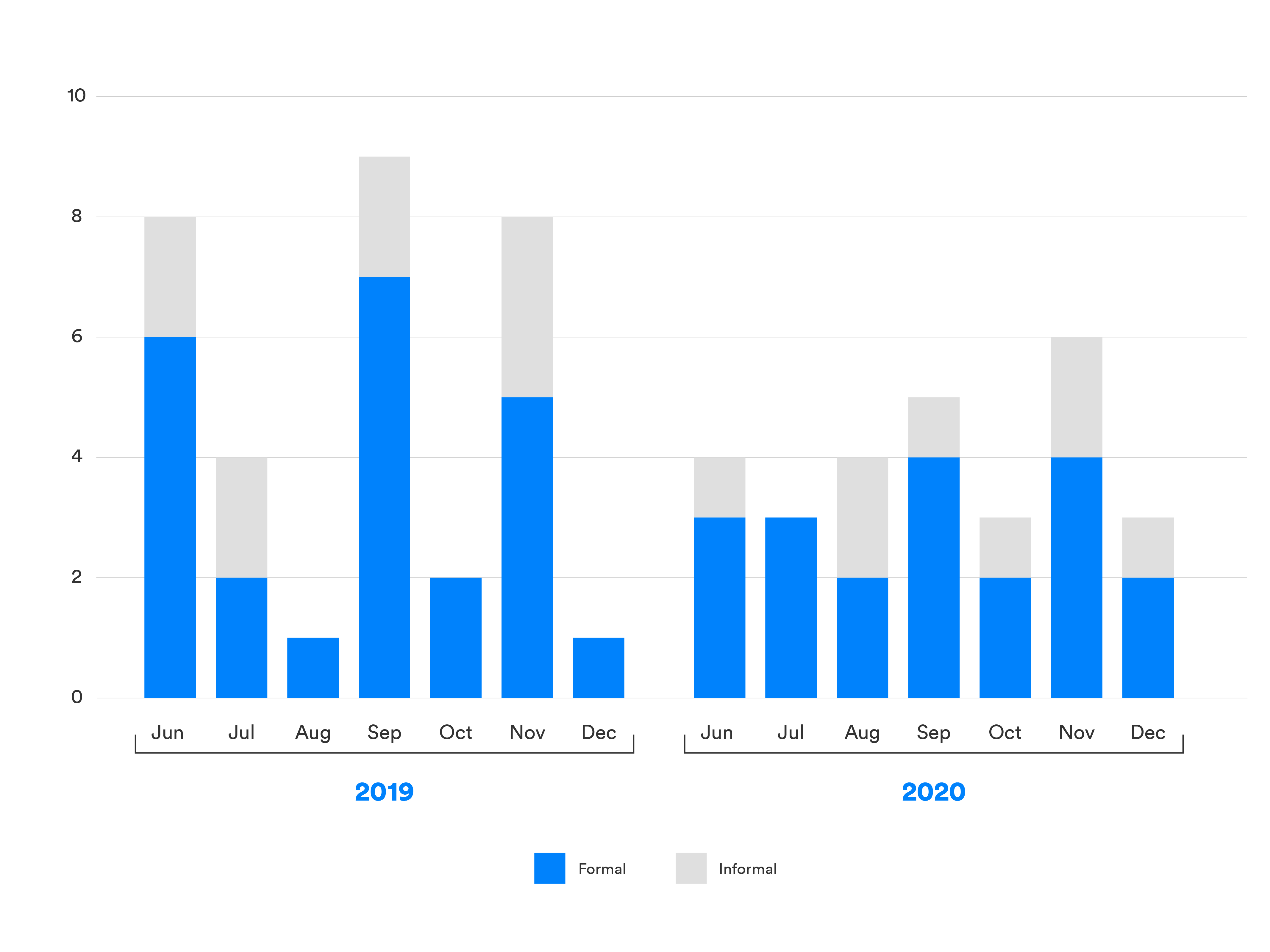Like many organizations around the world, the Bluetooth Special Interest Group (SIG) has made a full transition to remote operations, finding new ways to maintain the same levels of service and innovation as if we were in the office. Our group and committee meetings have gone virtual, and we have built important tools and capabilities to support working groups during specification validation that helped keep specification work moving forward in a challenging time.
Virtual meetings and testing
Virtual meetings provide an effective platform for group collaboration. Bluetooth community members and staff created a remote IOP (interoperability prototype) testing capability, hosted by the Bluetooth SIG, that is effectively helping to keep specifications in development moving forward. Using the remote IOP program, members can send their prototype devices to the Bluetooth SIG for inclusion in the IOP testing space. They can then connect to their prototypes remotely to trigger the necessary testing behavior.
Benefits of remote testing
Apart from the obvious health and safety advantages of avoiding in-person testing during a global pandemic, remote IOP testing has yielded a number of surprising benefits that make it a serious long-term option.
Before COVID-19, the Bluetooth SIG organized and hosted a handful of IOP testing events every year, each in different locations around the world. Varying testing dates and locations broadened opportunities for developers and engineers across multiple industries and from a wide range of countries to come together, hopefully at least once or twice a year, to conduct Bluetooth® interoperability testing for their products. Moving to a remote solution gives members more flexibility to collaborate at the times that work best for their schedules, allowing them to conduct testing with more members at faster intervals.
Furthermore, there are noticeable travel costs associated with sending entire teams around the world to perform in-person testing. By offering a remote option, organizations can reduce expenses while taking advantage of test scheduling flexibility.
Another advantage of using a remote platform is the option to record interoperability testing communications. It can help members optimize communication in situations where language and time zone barriers may be a challenge as well as serve as a point of reference for helping testers streamline their processes as they move forward.
That’s not to say that remote testing does not offer its share of challenges. With remote IOP testing events, there are no consequences should a participant register and fail to attend. This can make it difficult to translate participation numbers into successes. Also, while participant time zones are not a significant issue with remote testing sessions, they are not completely irrelevant. Bluetooth SIG staff need to make a concerted effort with participants to extend support in situations where time zones are significantly different. Yet, despite these challenges, the benefits still outweigh the drawbacks.

Year-over-year comparisons
A total of 31 IOP testing events were conducted throughout the second half of 2019 (23 formal and 8 informal). In the second half of 2020, after the Bluetooth SIG switched to a purely remote IOP platform, 28 total IOP testing sessions were conducted (20 formal and 8 informal); a difference in three testing opportunities.
Comparing year-over-year, while a few more IOP testing events were conducted in 2019, the peaks and valleys of session availability were extreme. Compared to 2020, total remote IOP testing sessions supported greater testing consistency throughout the year.
Since the Bluetooth SIG’s transition to a full remote platform, 11 specifications successfully completed testing using a remote platform. While in-person IOP testing events are unlikely to completely go away, especially once it is safe for global innovators to come together again, remote IOP testing sessions will likely be a fixture in Bluetooth processes moving forward. Even when we can meet again face to face, using a remote platform enables testing at any time in any time zone.